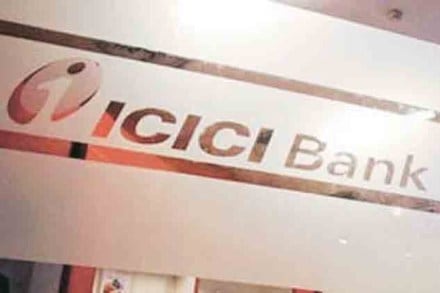ICICIBC reported PAT of R24.4 bn (9% beat, -19% y-o-y) due to stronger-than-expected core PPoP performance. Core PPoP was aided by stable margins q-o-q at 3.1% (helped by 10 bp improvement in domestic margins to 3.5%) and pick-up in fee income growth to 10% y-o-y (+6% q-o-q) v/s 5% in H1FY17. · Balance sheet clean-up phase continued with slippages at R70 bn (~6.4% annual slippage ratio), largely in-line. Of corporate slippages, ~75% were from WL+RL and devolvement of non-fund-based exposure relating to prior NPLs. Absolute GNPAs increased 17% q-o-q; net stress loans were stable q-o-q at 10.9% of customer assets. Continued focus on reducing stress exposure led to muted corporate loan growth (4%). However, corporate loans above investment grade rose 15% y-o-y. Domestic loans, led by retail (+18% y-o-y), grew 12% y-o-y.
Other highlights: (i) The bank utilised R5.3 bn from the R36 bn contingency provisions created in Q4FY16; balance contingency provisions stood at ~R15 bn. (ii) Helped by demonetisation, average daily CASA ratio improved 330 bp q-o-q to 44.8%, driven by 13% q-o-q SA deposit growth. (iii) FCNR redemption of $1.75 bn impacted deposits growth (14% y-o-y v/s 17% a quarter ago). (iv) RWA grew 5% y-o-y, compared to 8% growth in assets.
Also Watch:
Valuation and view: Movement from watch list and OSRL to actual balance sheet recognition, and increasing pace of resolution are reducing uncertainty over balance sheet health. ICICIBC is utilising one-off non-core income to create buffer on the balance sheet. Strong capitalisation (tier I of 13.3%), significant improvement in granularity of book (~54% retail+SME) and sharp improvement in liability profile (helping to de-risk business) provide comfort. We largely maintain earnings estimates; maintain Buy with SOTP of R345 (FY19-based).
Robust CASA growth; Strong margin performance: Reported NIM for the quarter came in at 3.1% (stable q-o-q). Domestic margins ticked higher by 10 bp q-o-q to 3.5% led by sharp fall in COF (-24bp q-o-q). Overseas NIMs declined 82 bp q-o-q to 0.8% primarily on account of interest income reversals for large mining exposure slipping into NPA category. Strong CASA growth of +26% y-o-y (13% q-o-q) was driven by robust SA deposit inflows (+30% y-o-y,+13% q-o-q). CA deposits grew 16% y-o-y (+14% q-o-q).Overall CASA ratio improved 420 bp q-o-q to 50% v/s 46% in Q2FY17. Average daily CASA ratio increased to 45% (+330 bp q-o-q) to reach life time high levels.
Strong retail performance; healthy growth in highly rated corporates:· Overall loan growth remained moderate at 5% y-o-y (flat q-o-q). Domestic loans grew +12% y-o-y whereas international loans were down 20% y-o-y owing to maturity of $870 m of overseas loans against FCNR deposits.
In domestic portfolio, incremental loan growth was driven by granular retail segment (+3% q-o-q and +18% y-o-y). Within retail loans, home loans (+17% y-o-y), credit cards (+40% y-o-y), personal loans (+40% y-o-y) and rural (+20% y-o-y) were the key drivers of growth. Vehicle loans grew by +15% y-o-y (similar to Q2FY17). Business Banking loans grew 12% y-o-y. Domestic corporate loan was muted at 4% y-o-y, primarily on account of the bank’s focus to reduce exposure to stressed sectors (12.4% vs 13.3% in FY16).
